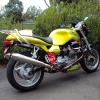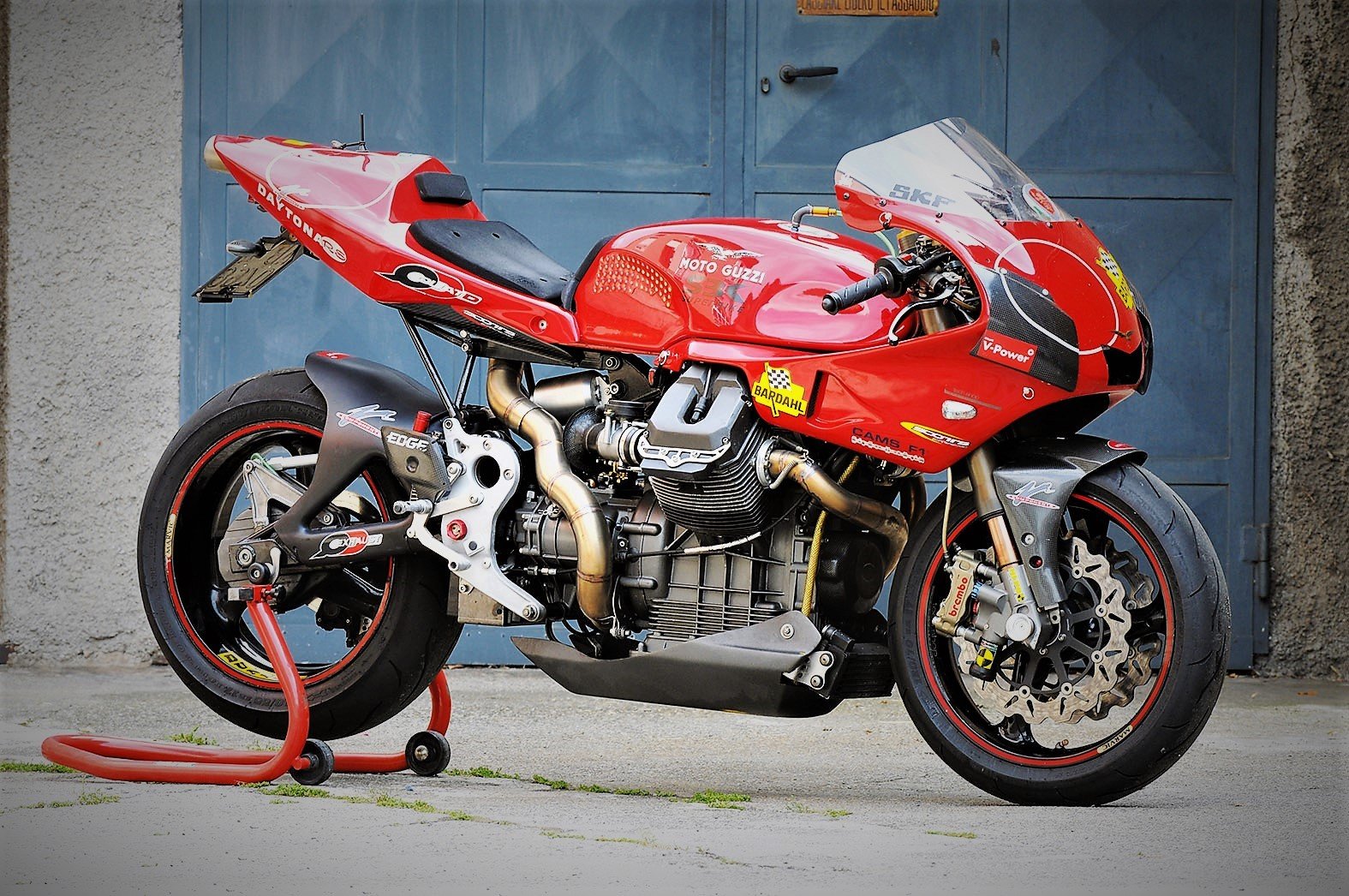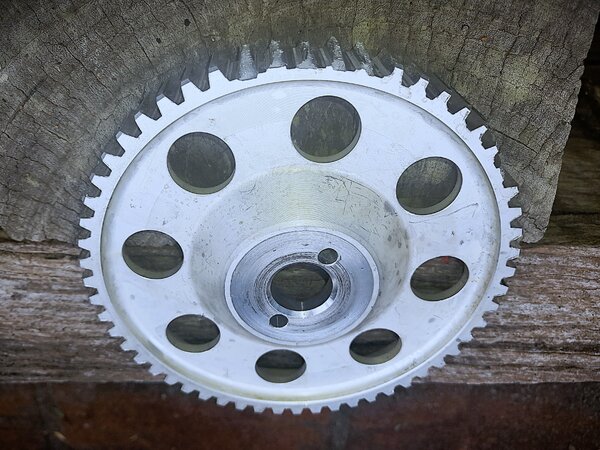-
Posts
5,209 -
Joined
-
Last visited
-
Days Won
267
Content Type
Profiles
Forums
Events
Gallery
Community Map
Everything posted by Lucky Phil
-
Not only the aluminium oil pump gears that fail on the high cam engines. Total rubbish.
-

Now I have seen it all!
Lucky Phil replied to p6x's topic in Special place for banter and conversation
No Phil -

Now I have seen it all!
Lucky Phil replied to p6x's topic in Special place for banter and conversation
BTW how many here can say their dentist holds a current national lap record on a motorcycle? I was looking at Phillip Island lap records a week back and noticed my dentist still holds the national BEARS lap record at PI from 1999. A 1:38.1 on a Ducati 996 Superbike. I mentioned it to him while "in the chair" a few days later. Phil -

Now I have seen it all!
Lucky Phil replied to p6x's topic in Special place for banter and conversation
You buy a hard top sports car Tim. Phil -
The sensor is used in literally dozens of other engine applications in the automotive world. Like many things they don't last forever. I bought 2 Chinese made ones about 6 years ago and used one in the Daytona engine. I think I paid $15aud for 2 direct from the manufacturer. The postage at the time was more than the cost of the sensors. Still working fine but very little mileage. I had images of them on here somewhere, probably in the daytona rebuild thread. Phil
-
You can hardly call the rider a cheat for what's installed inside the engine! I'm no big Mladdin fan either and have actually spent time with him at the track in his Kawasaki Australia superbike days. Phil
-

Now I have seen it all!
Lucky Phil replied to p6x's topic in Special place for banter and conversation
Makes more sense than a sidecar. Phil -
13.2 volts headlight on or headlight off? If it's with headlight off then check the voltage with headlight on. Here's some troubleshooting info from Brad Blacks site. It's for Ducati systems but the Guzzi is basically a Ducati single phase system. https://www.bikeboy.org/chargingsystemdiagnostic.html Phil
-
There is but don't go anywhere near it with gasket sealer as it will inhibit the pressure sensitive sealant on the gasket doing it's job. https://www.mgcycle.com/index.php?main_page=product_info&cPath=170_174&products_id=5044 OR Mick you could by a USED front cover gasket from a local ebay retailer in Germany. Remarkable value, can't go wrong there mate. https://www.ebay.com.au/itm/176430408521?_trkparms=amclksrc%3DITM%26aid%3D111001%26algo%3DREC.SEED%26ao%3D1%26asc%3D20211130125621%26meid%3D6565c1fed2f64fce8f2954b20c0e8b4f%26pid%3D101465%26rk%3D3%26rkt%3D4%26sd%3D386889832760%26itm%3D176430408521%26pmt%3D1%26noa%3D1%26pg%3D3650466&_trksid=p3650466.c101465.m3507 Phil
-
There are various thickness shims Mick not gaskets. The oil seal is an oring and is almost useless on it's own and a gasket sealer is required as well on install. The actual sealing design is flawed in my opinion. How to measure? With a depth gauge and a pair of vernier callipers and a bit of math. You can of course just put a blob of plasticene on the end of the pickup with some grease on it and no shims and stick it in and remove then measure the plasticene thickness and calculate the shims you need. Thats works as well. Someone years ago made quite a neat bespoke tool to measure the depth but it's so rarely required I just use the old school methodology. I've pulled apart engines where the sensor was contacting the wheel and it still ran ok. Okish maybe. Phil
-
My bikes that use the exact same disks, the Ducati 1000SS the Guzzi V11 Sport and the Ducati ST2 have had the following 320mm disks fitted to them over the years. Braking Wave, Galfer wave, Std Brembo original dished with round holes and later style spoke Brembo. All have stopped exactly the same road and track, no difference with the same pads and callipers. Phil
-
Before you start overthinking it which it sounds like you are make sure the fuel filter isn't blocked/dirty and the TB's are not popped off and the manifold rubbers aren't leaking. Move onto the TPS and tuning after that unless it's needed for some reason you haven't mentioned.
-
Simon Crafar is far too much of a suck for this job. His post race interviews with riders sound almost like a cringy public marriage proposal at times as he tries to suck up to them. There's not wishing to offend anyone and then theirs what Simon engages in come interview time. The concept of a professional straight forward question is not in his nature. In addition I've never and I mean never heard him criticise a riders action or manoeuvre on the track with regards to an altercation with another rider or an incident. He always plays the suckie sit on the fence guy desperate not to appear critical in case it gets back to the rider/s in question. The head steward needs to be firm but fair and nobodies fool, not interested in being "liked" by riders because unpalatable decisions for some riders need to be made. He's the last guy for the job. Spencer was rubbish at it as well, no consistency at all. MotoGP is turning into F1 anyway so it's going down the road of what happens off the track is going to swamp the on track performances. We now have the totally ludicrous situation where riders need to not only manage tyre wear but also drop positions and ride single file for a few laps to manage their front tyre pressure and the winner and place getters are now decided hours after the event when the powers that be review the tyre pressure data. This sort of thing is what makes F1 so tedious and it's now arrived in MotoGP. Popularity just ruins some things entirely. Phil
-

Transmission problem. Shift Bendix? Any ideas?
Lucky Phil replied to TomH's topic in Technical Topics
Gearboxes don't really suffer the condensation issue like an engine. An engine produces a LOT of water vapour starting from cold and that's what contaminates the oil and needs to evaporate off. Short runs just kills engines as does short start stop stuff like shuffling cars around in driveways and workshops. Doesn't matter what oil you use either it just kills them. Gearboxes not so much, foaming is an issue with gearboxes esp if they are overfilled a bit. Phil -
When Kenny Roberts was in a battle for the world title back in 80 or 81, can't remember which with Randy Mamola he said that when he saw Randy showing up at the track with his girlfriend at the time he knew he had the title won, lol. Good old "take no prisoners" Kenny R. Riders these days are racing from 3 years old esp in Italy and Spain. I don't think it makes that much difference anymore. Plenty of GP and WSB winners these days have a wife and kids during their racing careers (Johnny Rea, Alvaro Bautista, Maverick Vinales, Troy Bayliss to name a few) Getting married didn't slow down Casey Stoner either. The racing world has changed. A lot perform better with a partner/wife as the sport is now a pressure cooker and they need the emotional support. back in the 80, 90s and before that after the racing it was party time in the paddock and everyone get smashed together. Now it's whisked away with your family and PA. Phil
-
Bristol spent the whole war getting this engine half way reliable and producing power and at the end of the day the advantage it offered was completely negated from about 1941 onwards due to the development of high octane fuels. Pre war when fuel was pretty rubbish it offered a full point of additional compression according the Harry Ricardo's experiments. A classic case of flogging a dead horse or continuing with a design that you should simply have shelved years earlier. Bristol bet the future of the company on the sleeve valve engine and failed. Rolls Royce and others but esp RR took a proven design and just kept refining it until it was powerful and reliable. A lesson there in that. Dogged development of a fundamentally sound design produces success. Very much like the evolution of the motorcycle front fork. Phil
-
joe.caruso@ntlworld.com Phil
-
You might need to try calling to the geriatric brain dead inhabitants at wildguzzi. You know the ones who's brains are dulled and befuddled by all that smoke they keep breathing in around the "camp fire" Phil
-
https://www.motiveproducts.com/collections/brake-bleeder-kits You can buy decent ones now for about half the price of these. I've had mine for 8 years or so. Phil
-
It's best to avoid the old pump the pedal and/or lever bleeding process if you can on older vehicles most especially. It's not uncommon for corrosion and contaminants in the system to be at the end of the master cylinder where the piston and seal never get to in normal operation. Then you flush the fluid or bleed the brakes using the old pump the lever/pedal style and the seal is now pushed all the way down to the bottom of the master cylinder bore where it never normally reaches and bingo the seal is damaged. Similar reason for changing the slave cylinders on old drum brakes when you fit new brake shoes. If you don't when the slave piston is pushed all the way back into the cylinder fitting the new shoes it wrecks the seals 90% of the time. Pressure bleeding is better and safer these days and the bleeders are cheap to buy. You also don't get air sucking past the bleed screw threads giving a false reading of bubbles which often happens using a hand pump vacuum bleeder. Clutches don't have the same issue as the master cylinder and slave pistons always move full travel in use. Phil
-
The cover is a bit of a pain to start the threads but there's no way in hell I'm removing the whole sump to change the filter. I'd rather use care starting the thread correctly than do that. You can always mark the location of where the proper thread start is on the cap and sump to assist the process of re installing the cap. Phil
-
No but removing a pressure switch on the delivery side of the oiling circuit and therefore creating an open delivery circuit won't help the fact the pump has an air lock on the suction side of the circuit. Using a syringe to pump oil from the delivery side into the pump, primes the pump and also the suction side if you are lucky so it will no longer be devoid of oil and the pump will be primed and be able to suck oil. Your experience with your friends car was almost certainly a bit of good fortune and the pump just needed more running to prime. Phil
-
Een scherpe slag met een hamer van 1/2 kg met een fuseestang of lange ringsleutel op het gereedschap, wees voorzichtig. Je kunt ook de carterplaat helemaal verwijderen om het filter te vervangen. Phil
-
Not really. Re read my scenario and you might understand the scenario better. I've had this issue on a Ducati ST2 front brakes with a badly worn wheel bearing. Not saying it's the issue for the OP but it's worth spending 5 min to check the wheel bearings. Brake pads only clear the disk by maybe .005" thousands of an inch in normal operation when the brakes are released so it only requires the pads being pushed back 1/2 mm total to lose the brakes entirely. In the case of the Ducati front brakes you got good lever after riding in a straight section of road and coming to a stop. Full lever and normal travel. Take off and ride it around a corner and the next stop the lever's coming back to the bar. Give the lever a second pump and they're back to normal as is the next stop if you rode in a straight piece of road. Throw in a corner and you lost the lever again. Lateral wheel movement during cornering pushing the pads back but not in straight line riding. Phil






